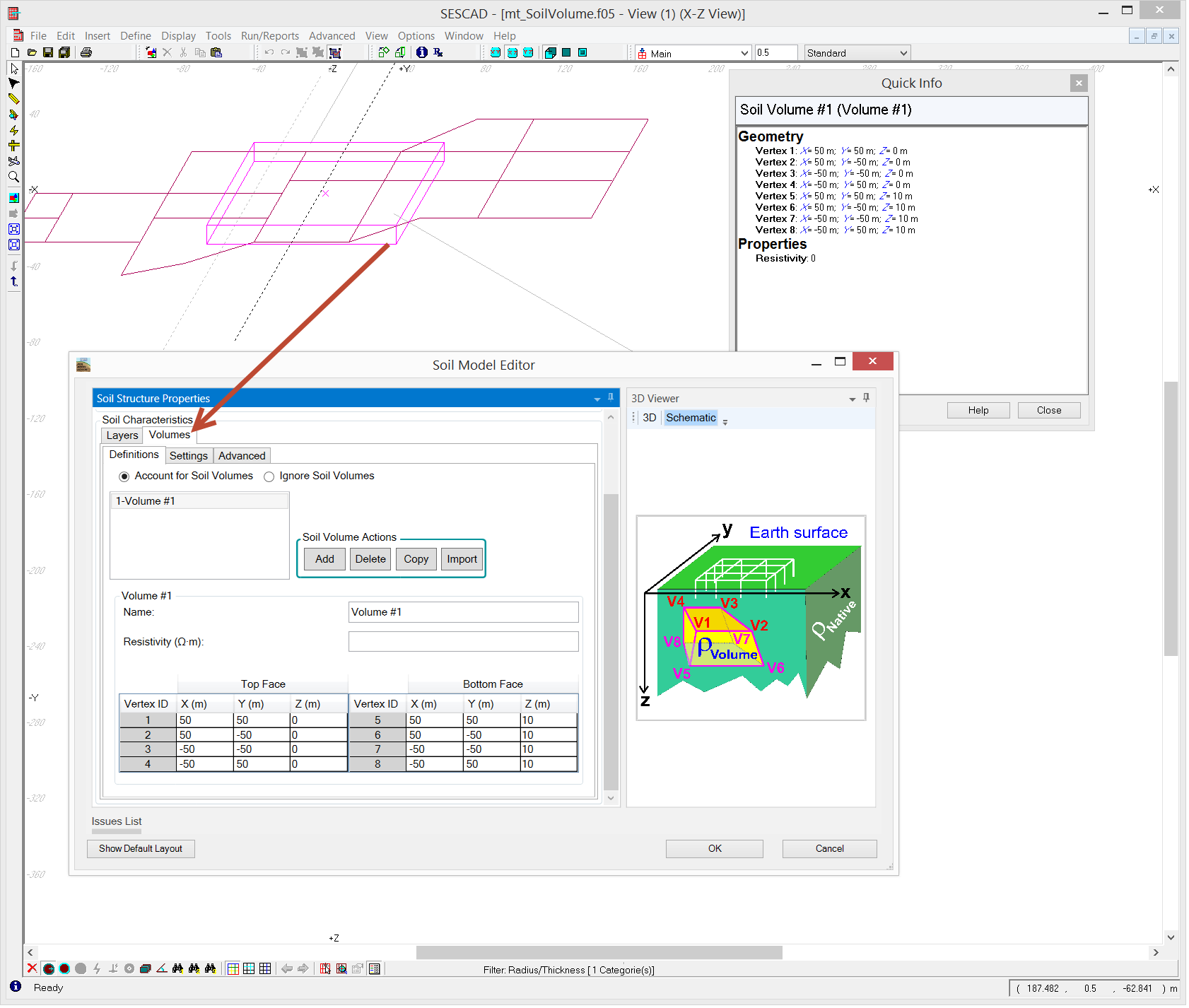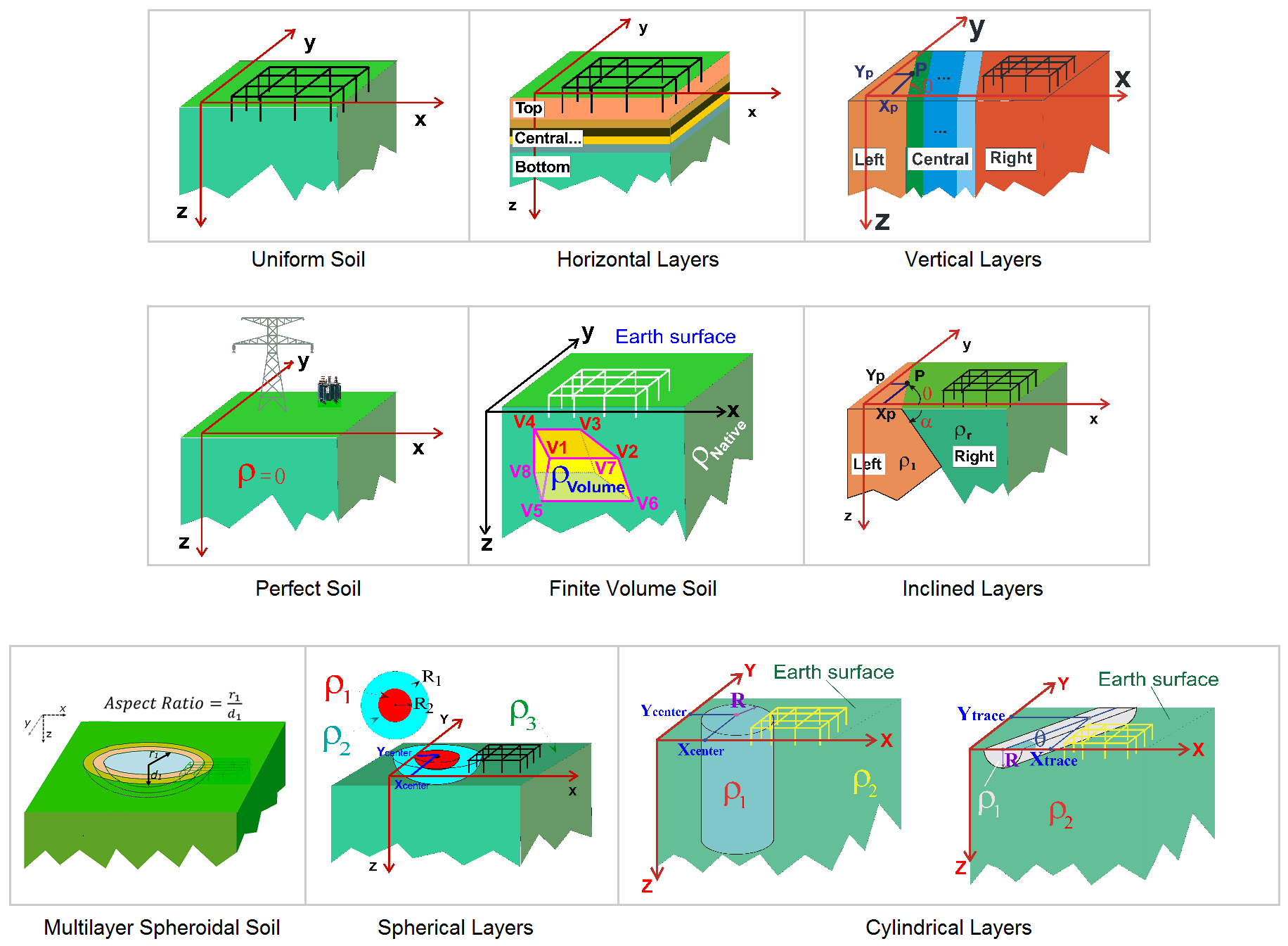The MALT computation module is ideal for analyzing electrically small power system grounding networks for low frequency applications. It can also be used to investigate potentials and currents diverted (transferred) to nearby buried metallic structures. MALT is one of the main components of the
AutoGround
,
MultiGround
,
AutoGrid Pro
, and
AutoGroundDesign
software packages.
Technical Description
The MALT computation module assumes that the conductors and metallic plates (for perfect, uniform and horizontally layered soils) that are part of the same electrode (such as the main grounding system) are at the same potential without taking inductive effects or potential drops along these components into consideration (i.e., each electrode is equipotential). It is worth mentioning, however, that all metallic conductors, plates or structures can be specified in different electrodes, such as Main, Return and various so-called Buried Structures.

Finite volumes of soils in MALT.
Technical Highlights
The main features of MALT are as follows:
-
Availability of multiple soil models with one, two or more horizontal or vertical layers. It is also possible to model soil structures with complex geometries, such as spherically or cylindrically layered soils, soils with an inclined layer or in the shape of layered spheroids (oblate or prolate), and soils with finite volumes of various resistivities ideal for modelling substation backfill sites, dams, rivers or lakes, for example.

Using MALT, you can model vertical, horizontal, cylindrical, spherical, or spheroidal multilayered soils, soils with an inclined layer as well as embedded arbitrary finite volumes in uniform and horizontally multilayered soil.
-
Any number of electrodes can be specified, whether they are energized or not.
-
The conductors and metallic plates can be located arbitrarily in the soil.
-
Each electrode can be energized individually with the desired current or potential (GPR) source.
-
Ground impedance measurements can be interpreted in non-uniform soils using the fall-of-potential method or other techniques.
-
Electrostatic studies involving conductors and plates (energized or not) above a perfect ground plane can be carried out, optionally in the presence of an external electric field.
-
Conductors and metallic plates can be bare or covered with various coating types.
Technical Features
-
Systems are modeled as a network of lossless cylindrical conductors and metallic plates freely directed either in space (for perfect soil model) or in soil for grounding studies.
-
Horizontally layered soils, vertically layered soils, spherically layered soils and spheroidal (oblate or prolate) layered soils can have any number of different layers, with arbitrary resistivity contrasts. Inclined layers, cylindrical layers and arbitrary, prismatic volumes of soil (finite volumes) with any resistivity value can be embedded in the native soil (for uniform and horizontally layered soil models).
-
Computes the ground potential rise (GPR) of every independent system of the grounding network, the earth leakage current along every conductor segment and plate patch, and the potentials, electric field and current density at each specified point in the soil or at the earth surface.
-
The grounding systems can be any arbitrary group of metallic structures. Each structure can be energized or not and can have potential rises that are different from each other.

Using MALT, you can model arbitrary groups of metallic structures.




